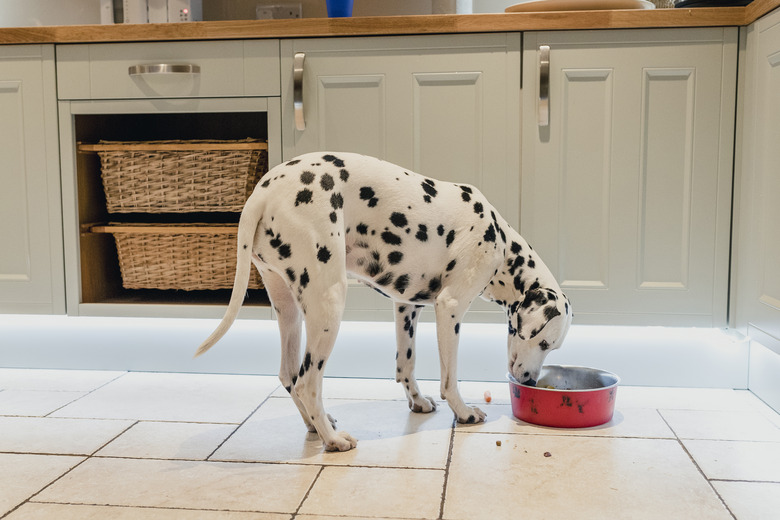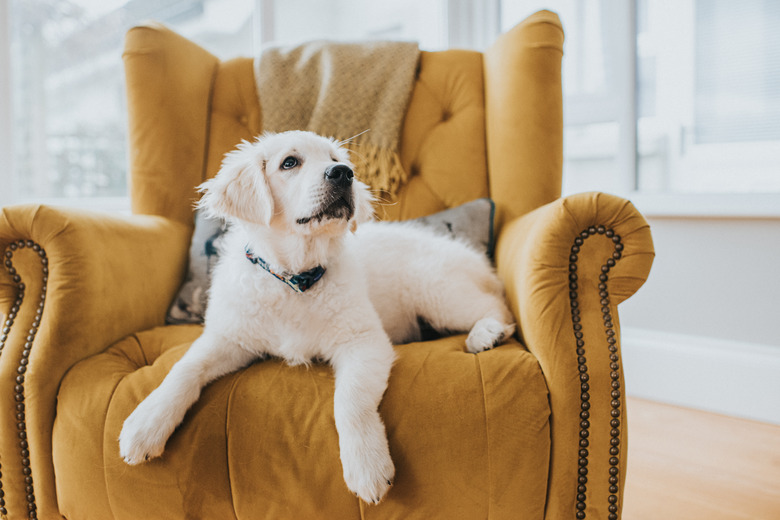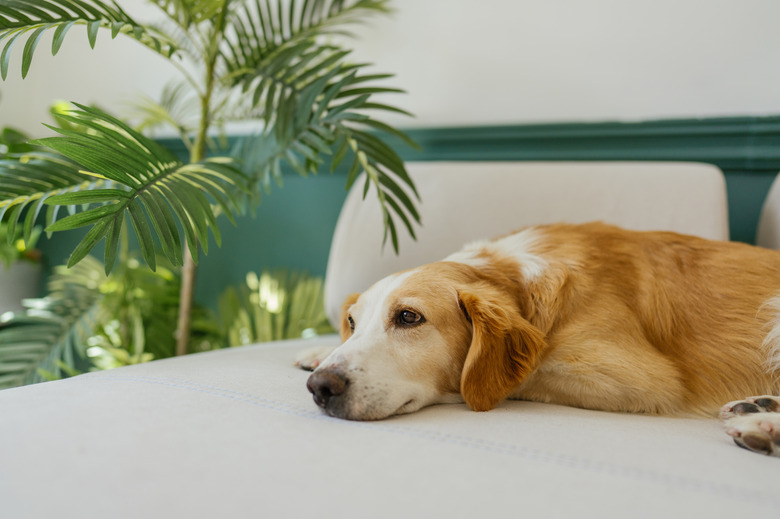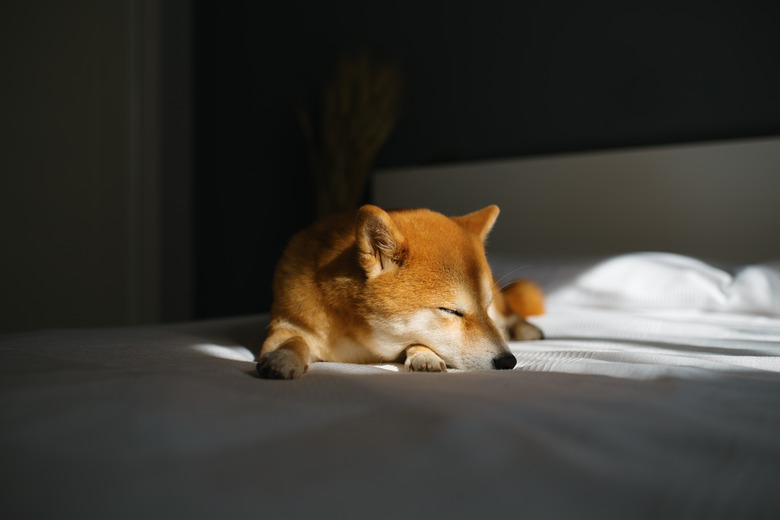Teaching Dogs & Puppies To Be Comfortable Home Alone
Even if you love spending time with your dog there will come a time when they need to stay home alone. Building your adult dog or puppy's comfort with being home alone is something that should be intentionally taught and practiced. It can also help reduce stress and anxiety for your dog. Working on this skill can also help prevent larger behavioral problems.
Pandemic problems
Pandemic problems
One of the side effects of the pandemic has been that many dogs didn't experience being home alone. For puppies born during the pandemic, being home alone now can be challenging as the locked-down world. It is the only reality they knew, and now, they are having to learn this skill for the first time. Not knowing how to be home alone is not just a "pandemic puppy" problem. Many adult dogs are also struggling with remembering how to be comfortable with alone time. The good thing is that staying home alone is a skill that dogs can learn.
Teaching your dog to stay home alone
Teaching your dog to stay home alone
When teaching a dog or puppy to be comfortable staying home alone it's essential to start slowly. The worst thing a dog owner can do is to get a dog or puppy and then leave them home alone for six or eight hours while they go to work. While some dogs may be able to handle this just fine, for many, it will be a shock. Its overwhelming nature can lead to anxiety or the development of dog behavioral challenges. Dogs are social creatures and they value the time spent with their people.
With a new dog or puppy start slowly. As their comfort and confidence grow you can increase the amount of time your dog stays home alone. By slowly building up the amount of time you leave your dog at home alone your dog or puppy will gain confidence in spending time on their own. They will begin to see it as just another part of the day, and not something to be worried about. However, remember that socialization is important. Be fair with how long you ask your dog to be home alone.
Be consistent
Be consistent
As you are working on helping your dog to be comfortable, it's also important to be consistent. Even if you work from home, are retired, or are on summer vacation, make it a point to regularly leave your dog at home alone. Even if you are just running out for a quick errand or to get coffee, it's important for your dog to get regular practice with having alone time. This consistent practice will support your dog to feel and retain this skill.
Decide on containment
Decide on containment
When you are getting ready to leave your dog at home, you'll want to think about what kind of containment is right for them. This can be dog or puppy-proofing an area of the home. It could also be putting your dog in a crate. Whichever way you want to contain your dog when you aren't home is a personal decision. If your goal is to eventually be gone for long periods of time, it's best to create a dog-proofed area of the house that are safe for your dog. It is also important to provide them with space to move around — versus being in a crate all day.
Although crate training can be helpful in preventing accidents, it's not fair to expect your dog to be in the crate for extended periods of time. If you intend for your dog to be created while you are at work, have a professional dog walker, a friend, or a neighbor come by during the day. Having someone give your dog some enrichment, exercise and an opportunity to potty is a must.
Provide solo enrichment
Provide solo enrichment
The goal is to make staying home alone fun for your dog or puppy. To do this, you want to provide your dog with enrichment opportunities through independent play for when you leave the house. This helps distract your dog from you leaving and also supports your dog to relax and self-soothe. Using interactive and treat dispensing toys or hard rubber toys stuffed with peanut butter, wet food or other soft treats are ideal to leave with your dog. They will keep your dog occupied for an extended period, especially during the transition period of your leaving — when most dogs struggle the most.
If you have multiple dogs, it's best to use food dispensing toys with each dog in separate areas of the home, behind baby gates, or in crates. This can prevent the risk of the dogs' resource guarding or the fighting over treats between the dogs.
Reduce distractions
Reduce distractions
To help your dog or puppy learn to stay home alone it's helpful to reduce distractions, whenever possible. Close your blinds or curtains before leaving — especially if you have a dog who has a history of barking at squirrels, postal workers, or other neighborhood elements. To reduce distractions, you can also use white noise machines, a TV, or a radio to muffle the distracting sounds of the outside that could encourage them to bark.
Don’t make a fuss
Don't make a fuss
Leaving your dog can be hard for people. This can lead to owners getting emotional and fussing over their dog to reassure them that it will be ok. This might make people feel better, but it often backfires when it comes to dog behavior. By making your leaving and returning a big deal, it can increase your dog's level of anxiety. The goal should be to make leaving and returning low-key — not hyping your dog up when you leave and return
Consider using cameras
Consider using cameras
If you are concerned about what your dog will do while home alone it can be helpful to reduce anxiety and get a Wi-Fi-enabled video camera. These cameras can be accessed via apps on your cell phone. They give you a live look at how your dog is responding to being home alone. These cameras can be reassuring for owners. They can also help with gathering information that can be useful to share with your dog trainer if your dog is struggling.
Separation anxiety in dogs
Separation anxiety in dogs
If your dog is struggling with staying home alone, they may have separation anxiety. Separation anxiety is a serious condition where dogs panic when they are left alone. Symptoms to watch for include excessive barking or howling, pacing, destructive behavior, attempts at escaping, panting, or seeming distressed. If you are struggling with leaving your dog home alone or suspect your dog may have symptoms of separation anxiety, it's important to work with a dog trainer experienced in separation anxiety who uses positive reinforcement methods right away.
In summary
In summary
Being comfortable with alone time is a skill that all dogs and puppies need to have. The key to helping your dog stay home alone is to build up the skill slowly. Don't make a big deal out of leaving or returning, just make it another part of your dog's day. Giving your dog safe enrichment activities while you are away and trying to reduce outside distractions can help your dog relax while staying home alone. Be sure to practice alone time regularly slowly to make them successful with this skill.



